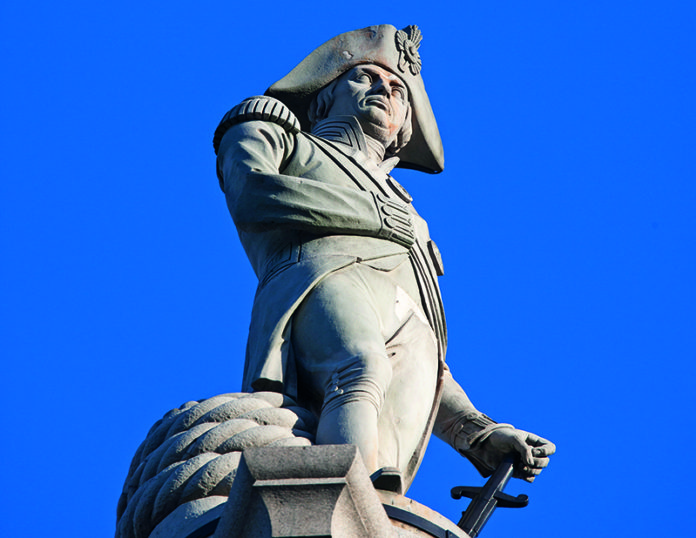Guarded by lions and towering above Trafalgar Square, this lofty monument is one of London’s most iconic
On 12 November 1918, London saw wild celebrations as an armistice declared the end of the First World War.
Nowhere was the occasion more rumbustiously marked than Trafalgar Square, memorial to
another British victory. As night fell, euphoric crowds lit a bon fire around the square’s centrepiece, Nelson’s Column, using army recruitment posters, wooden paving blocks, and
even a night-watchman’s hut for fuel. A fire engine arrived; it was commandeered and the firemen themselves doused.
One hundred years on, the resulting cracks to the Devon granite pillar are long since repaired but deep scars in the stone base remain, telling their tale of public outburst in the very hour of peace.
The Battle of Trafalgar claimed the life of Admiral Lord Nelson in 1805, even as Britain gained one of its most famous victories. Already a national hero, Nelson’s reputation was now nigh-on godlike. Up and down the land, memorials sprang up. The first, an obelisk, was unveiled in Glasgow in 1806, followed by pillars, statues, plaques and columns from Edinburgh to Great Yarmouth, Derbyshire to North Wales, Bridgetown, Barbados to Montreal, Canada. Salisbury Plain saw ‘Nile Clumps’ of trees planted, commemorating victory in Egypt.
It seemed the one place that hadn’t honoured the admiral was England’s capital.
Find out the full story of how Nelson’s column was built30. Read the full article, see Vol 87 Issue 1 of BRITAIN magazine on sale here






 © 2024
© 2024